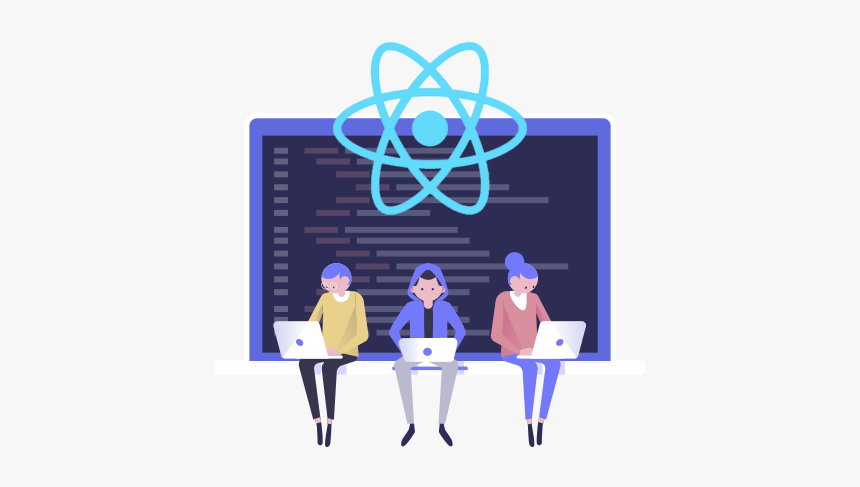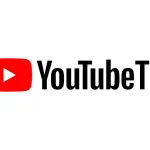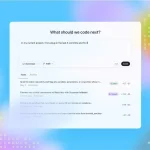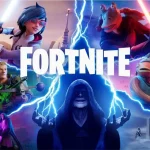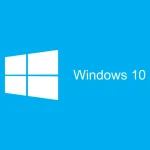Hello to everyone who has joined the IT world! Frontend is one of the most dynamically developing areas of modern development. Unsurprisingly, it is overgrown with many tools, libraries and frameworks to help you get started in development. There is a common requirement in programmer search advertisements to be able to work with React. Sometimes employers expect React knowledge not only from front-end developers, but also from back-end developers. Why is this library so popular, what you should know as a React developer, what are the prospects of React according to experienced programmers? Read the answers to these and other questions in the article ‘What to Learnt to Get a Job as a React Developer’. Let’s start from the beginning!
React is a JavaScript user interface (UI) library created by the Facebook developers. The library began to be used on the site of this social network in 2011. And in 2013, Facebook opened the source code for React. With React, developers create web applications that change display without reloading the page. This allows applications to quickly respond to user actions, such as filling out forms, applying filters, adding items to the cart, and so on. React is used to render UI components. Also, the library can fully manage the frontend. In this case, React is used with state management and routing libraries such as Redux and React Router. One of the key features of React is its versatility. This library can be used on server and mobile platforms using React Native. This is the Learn Once, Write Anywhere principle. Another important feature of the library is declarative ness. Using React, the developer describes how the interface components look in different states. A declarative approach shortens the code and makes it understandable. React is component-based, which is another key feature of the library. Each component returns a part of the user interface with its own state. By combining the components, the programmer creates a complete web application interface. An important feature of React is its use of JSX. This is a JavaScript syntax extension that is useful for describing an interface. JSX is similar to HTML, but it is still JavaScript.
What technical skills do employers want to see? Although we are talking about a narrow specialization – React developer, nevertheless, it is still the same Frontend developer. Therefore, he should have all the general knowledge that a modern Frontend developer has: good basic knowledge of JavaScript, HTML and CSS. If we reveal in more detail what it means to know JavaScript, we will get the following recommendations: knowledge of versions, syntax and API of different versions of JavaScript (ECMAScript); knowledge of new standards and capabilities (from ES5 to ES2017 +); understanding the features of V8, know what and how the DOM, CSSOM, Event Loop work; knowledge of JS API: from WebSockets and PWA to WebRTC; knowledge of how browsers work, and features of different browser engines. Experience with at least one or more frameworks (in our case, React is given priority). Knowing at least a minimal level of Node.js to run tools. Experience in server-side Node.js development is a good plus. Testing experience (from Unit tests to e2e tests) will also be a good plus. Although React is positioned as a library, it is not used in its pure form. As a rule, this is a whole set of auxiliary libraries and tools. A modern React developer uses the following kit: React, Redux, Webpack – this is a basic minimal kit. Additionally, many auxiliary libraries and tools can be used from LoDash and Immutable.js to CSSinJS, JSS and others. It is desirable for React developers to have a higher technical degree, but not required. If we are talking about vacancies of a React developer, then it depends on the level of the required specialist. An experienced one, of course, should have at least 2 years of experience in React. If we talk about juniors, then the experience of working with any framework (even at the level of “studying for myself”). As a rule, the main requirement is to know the basic things well: JS, HTML and CSS. Understanding how the Internet works (what is HTTP and how it works, what is HTTP / 2), and basic algorithmic training. A framework is just a tool that may be outdated or not at all useful in a particular case. You cannot think only in terms of frameworks. You need to broaden your horizons and be well versed in basic things. Yesterday was React, today is Vue.js, and tomorrow it can be native WebComponents. Frameworks are born and die. And the basic things remain.
Learning React – How and Where to Start? In my opinion, learning React requires a certain level of technical knowledge and programming skills. You can’t just dive into assuming others can learn React quickly, you can too. There is no such thing as “fast” in learning, or maybe I’m wrong. Small, tiny projects are a great way to learn new languages or libraries. Don’t start learning React by copying large projects like Yelp. Giant tutorials will only teach you how to “copy and paste” the code, only sometimes you will be able to apply the knowledge gained. Even making a list of tasks can’t always help you make the right choice if you are going to create something for the first time. It all depends on yourself. In general, learn one technology at a time and accumulate knowledge. Get a good grasp of JavaScript, then start learning React until you can create components so that they “talk” to each other. No matter what level of knowledge you have, there are things that are best avoided. Avoid posts containing a lot of information about different technologies such as React, Redux, Routing, Express, Webpack. The sheer amount of information can be confusing. It’s like that old question: “How to eat an elephant?” – At a time, but piece by piece. Also, you don’t need to customize your Webpack build to build something using React. To create a project, use the ready-made utilities from Facebook (Create React App), and then dive into learning how to create various components.
I propose to move on to the plan that I created for the gradual learning of React:
- Learn ECMAScript. ES6 is the future and the React team is using it, so learning ES6 (even some of ES7) is the right choice. If you are already familiar with Javascript, you will have no problem learning ES6. But if not, take more time. Some important ES6 features that are commonly used in React nowadays, and I really advise you to learn them before diving into React from internet sources: ES6 classes, Arrow function, constant scope (variables, functions), map function (), Destructive task, Template string (optional, but good for string format).
- The next thing you need to know is the Webpack. React uses Webpack as its default build tool. Therefore, you need to learn how to use Webpack to create applications. The Internet offers a ton of resources for exploring it. You can dig deeper into loaders and plugins later if needed.
- It’s time for React. After the previous two points, feel free to move on to React, it will be simply because you are already familiar with ES6 and Webpack syntax. Some concepts you should learn with caution if you’re new to React: State, Props, React Component Lifecycle, and be aware of “shouldComponentUpdate ()”. Don’t try to get around them, or you will regret it later!
- Learn ReactRouter. It is important to target the interface, which is why a ReactRouter is required. This tutorial can be time consuming. But keep creating and deleting projects to learn ReactRouter. There are many tutorials for ReactRouter nowadays.
- Now it’s Flux’s turn. Flux is a front-end architecture developed by the Facebook React team.
- Try to learn Redux. Just rewrite the TodoList app a few times yourself and you’ll get up to speed quickly. I promise you this! There are two things to keep in mind when using Redux: The data must always be immutable. It is good and very good practice to make your data immutable unless you want to waste time looking for magicians lurking somewhere in your applications; Handle an asynchronous action with care. You don’t want to lose data somewhere in an asynchronous operation, right?
- Learn to create many applications from small to large. You don’t actually get something if you don’t use this. This is the most important part of the mind correction process to get closer to React. Try to come up with a lot of little ideas and implement them in React.
- Find out a little more. For now, you can simply find something else in the React ecosystem that fits into your architecture, learn and use it correctly. Some other things you might consider: RxJS, Server Rendering, GraphQL and Relays, JSON Graph & Falcor.
Conclusion
After reading the article ‘What to Learnt to Get a Job as a React Developer’, let’s focus again on the key messages:
- React is a JavaScript library for working with user interfaces;
- in 2020 React is the most popular tool among libraries and frameworks for working with UI;
- specialists with knowledge of React are in demand in the labor market. Employers want this library to be able to work with both candidates for front-end developer positions, as well as back-end and full-stack developers;
- Experts recommend learning React, as knowledge of this library increases the chances of successful employment.
If you really want to, then studying React and its surroundings will take you about 3.5 months. React is great if you learn it right. If you really want to learn React, here are my two tips: Take your time, stay calm and learn React step by step! Cheers and good luck on your React journey!

